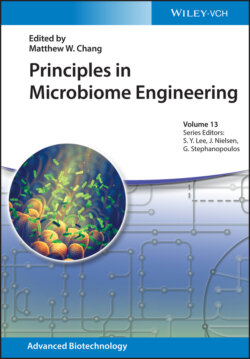Читать книгу Principles in Microbiome Engineering - Группа авторов - Страница 17
1.1.1.4 Respiratory Microbiome
ОглавлениеThe current studies of the human respiratory microbiome focus on the lung microbiota, particularly in the bronchial microbiome. Samples of the human lungs are acquired using a deep nasal swab (for nasopharyngeal sampling) [31] and sputum collection (for bronchoalveolar sampling) [32]. In the lungs of a healthy person, the typical microbiota includes those from the genera of Firmicutes, Bacteroidetes, Proteobacteria, Fusobacteria, and Actinobacteria [33, 34] (Figure 1.1). These microbes thrive at mucosal surfaces of both the lung and bronchus where the exchange of oxygen and carbon dioxide happens; therefore, most of these microbes are facultative anaerobes able to survive in the varying levels of oxygen [9]. While the study of the respiratory microbiome requires further in‐depth understanding, these microbes certainly play an important role in various respiratory diseases such as bacterial pneumonia, cystic fibrosis, asthma, and chronic obstructive pulmonary disease (COPD) [31].
